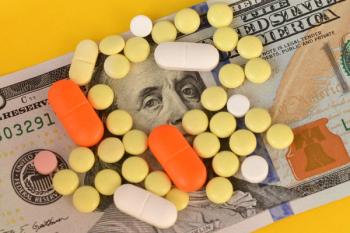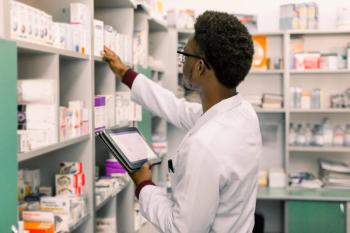
The Market Tightens
How was business in 2015? What do you see coming in 2016? Drug Topics' annual business outlook survey took your input and put it all together.
Most community pharmacists continue to expect a positive business year for 2016. However, the market is tightening and challenges continue to test the industry.
Approximately 60% of community pharmacists are looking forward to a good, very good, or excellent business outlook for the coming year; but community pharmacists have experienced a slight drop in net profits this year, and they report that lower reimbursement from third parties, mandatory mail-order programs, and preferred pharmacy networks for Medicare Part D continue to be a challenge.
Community pharmacists are less optimistic than they have been in the past years. Few pharmacies are planning new stores or significant hiring increases.
Pharmacists are also divided about their satisfaction with pharmacy associations and differ in their views about whether Medicare Part D is a positive or negative factor in their businesses today.
A total of 422 community pharmacists weighed in on the state of the industry as part of Drug Topics’ 2016 Business Outlook Survey, which fielded from October 21 through November 6, 2015. Too few hospital pharmacists responded to the survey to draw any significant conclusions, so those results will not be included here.
Demographic conditions
This year’s survey included input from community pharmacists in a variety of practice settings. The majority, or 46%, reported practicing pharmacy in an independent setting, while 24% were from chain pharmacies that had at least four or more locations. An additional 11% practiced in prescription departments in supermarkets, discount stores, or other retail outlets, 10% practiced in hospitals operating a pharmacy department or a nursing home with a pharmacy service, and 9% worked in other settings.
Pharmacists were dispersed across the country; the majority reported that they practiced pharmacy in the Southeast (31%), Midwest (25%), or Southwest (22%). Fewer respondents practiced in the Northeast (17%) or Northwest (4%).
Most of those who weighed in were veteran pharmacists; 41% of those who took this year’s survey had more than 30 years on the job. Just 7% had five years of experience or less.
Overall business climate in 2015
The pharmacy industry continues to be prosperous, and most community pharmacists say 2015 has been a good year.
Although generic drug price hikes, drug shortages, and preferred pharmacy networks were the top news stories affecting pharmacy this year, the business climate in individual pharmacies across the country has been stable.
Most of those surveyed, or 72%, say they would classify the business outlook for 2015 as either good, very good, or excellent. This is a slight uptick from the 65% who felt that way in 2014. Approximately a quarter, or 26%, described the business outlook for 2015 as fair, and another 11% labeled it as poor.
Most pharmacists seem pleased with the overall picture in their pharmacy, but the survey uncovered some industry struggles as well.
Net profits
For instance, this year, more pharmacists acknowledged they expect to see a drop in net profits.
While in 2014, 54% saw either an increasing or consistent profit with the year before, this year that number dropped to 49%.
The percentage of pharmacists who are predicting a decrease in net profits grew from 36% in 2014 to 43% this year.
Positive factors
Despite the slipping profits that some are beginning to see, pharmacists say many positive factors have influenced business as well. Nearly half, or 48.8%, of all community pharmacists see immunizations as one of the top positive factors for 2015.
Other positive factors included:
- Patient care services (34%)
- Increase of e-prescriptions (33%)
- MTM (29%)
- Preferred pharmacy networks for commercial plans (20%)
Challenges continue
But, as with most industries, there have also been challenges. Many of the challenges that have plagued community pharmacists in recent years continue to be a concern today. The top four challenges identified in last year’s survey remain at the top of the list this year as well, leading off with lower reimbursement from third parties, seen by 81% of respondents as a top negative factor influencing the market in 2015.
Other negative factors were identified as:
- Mandatory mail-order (72%)
- Preferred pharmacy networks for Medicare Part D (62%)
- Preferred pharmacy networks for commercial plans (55%)
- Generic drug shortages (54%)
The survey also found that 69% of community pharmacists believe there is a surplus of pharmacists either in their state overall or within specific geographical areas. Only 16% - a drop from 21% in 2014 - believe this isn’t a concern for their state.
A look ahead
Optimism continues for a majority of pharmacists who look forward to next year. Most, 60%, are predicting a good-to-excellent year in 2016. This is a slight drop from the 62% of pharmacists who were optimistic in 2014.
Not everyone is predicting success: 29% believe that 2016 will be only fair, and another 11% anticipate a poor year.
Overall, most community pharmacists predict that sales will either continue to rise or to remain about the same for. According to the survey, 70% expect 2016 sales will either exceed or remain consistent with the figures they saw this year.
Sales aren’t the only thing that may be on the rise. An overwhelming 91% of pharmacists say they believe operating expenses will either increase or remain the same in 2016. More than half (65%) predict an increase.
Lowered expectations
While the general picture appears optimistic, there are signs that the industry is lowering its expectations. For instance, pharmacists are less confident about their net profits in 2016 than they were in past years. Survey numbers show that 45% believe their net profits will be the same or above 2015 estimates - a drop from 49% last year. And 44% believe that net profits will actually decrease - a significantly higher figure than the 37% who predicted a decline in the year ahead last year.
Despite the surplus perceived by many, most pharmacists also don’t believe they’ll be adding extra staff in 2016. The survey found that 73% believe the number of pharmacists in their pharmacy will stay the same; 65% also predict that their pharmacy will maintain the same number of pharmacy technicians.
While pharmacists aren’t projecting a significant number of new hires, they don’t see any significant decreases either: just 12% expect the number of pharmacists to decrease in 2016 and 14% expect to see the number of pharmacy technicians decrease.
In terms of the number of pharmacies in their area, most plan to maintain the status quo. Only 22% said they or their company planned to open a new pharmacy in 2016. This trend is consistent with last year’s findings, when only 21% planned to open a new pharmacy.
Lower reimbursement from third-party payers will also continue to be a struggle, with 81% of pharmacists listing it as a top challenge for the year.
Other top challenges include:
- Preferred pharmacy networks (60%)
- Competition from mail-order pharmacies (54%)
- Decrease in state Medicaid rates and MAC and FUL (45%)
- Delayed MAC payments (43%)
Medicare Part D
An increasing number of pharmacists say Medicare is a growing part of their business. This year, 31% of those surveyed said Medicare pa
tients represented about 31% to 40% of their total customers. This number is up from 23% last year and is higher than the 25% who reported this year that private third-party plans make up 31% to 40% of their customers.
While Medicare in general is making up a larger portion of respondents’ customers, pharmacists are split on how Medicare Part D has affected business. About a third, or 35%, believe it has had a positive impact on business, while 34% say it has been a negative factor. The rest weren’t sure.
Many said that while they initially saw more prescriptions as a result of Medicare Part D, because of low reimbursements they are now seeing less profit.
“Initially Part D was a boon for pharmacy. Reimbursement was reasonable for the drug and dispensing. Now many plans are not reimbursing enough to cover the cost of the drug and overhead,” one survey respondent wrote.
Others said that their exclusion from preferred networks has driven business away from their pharmacies. “As an independent, it’s hard only being a preferred pharmacy on one or two plans, which forces patients who have been with us for decades to go elsewhere,” one said.
Some note the benefits. They stated that Medicare Part D has given seniors better coverage, has allowed people to fill more of their prescriptions, and has meant more business for the pharmacy.
“Overall, I believe it has helped many seniors afford medications they were doing without,” one respondent wrote.
On another positive note, more pharmacists report that they are providing MTM services under Medicare Part D, and more are seeing payment for it. This year, 60% said they provided MTM services, up from 53% in 2014. The percentage of pharmacists who are being paid to provide MTM services also rose, from 34% in 2014 to 45% this year.
Most, or 44%, say they were paid between $250 and $999 to provide the services. An additional 31% estimated that they were paid between $0 and $249, and 22% said their payment ranged between $1,000 and $4,999.
Pharmacy associations
Pharmacy associations strive to speak for pharmacists, advocating for change and growth in the profession. But a growing number of pharmacists aren’t pleased with the representation they have seen.
“Pharmacy associatio
ns are not getting anything done to help the dire situation for independent pharmacies and pharmacies in general. They cannot affect policy with the large insurance and drug-manufacturing companies,” one pharmacist wrote.
This year’s survey shows that 46% of respondents - a slight uptick from 44% last year - are unsatisfied with the job pharmacy associations are doing. They claim the associations are out of touch, have failed to make significant progress to fight pharmacy benefit managers, and haven’t done enough to improve work conditions for some in the industry.
“Workload and job satisfaction are at all-time low, and pharmacy associations have done nothing to limit skyrocketing employer demands, workload, and responsibilities,” one said.
Others said they’d like to see the pharmacy associations take a more united stand to address the biggest issues affecting pharmacists today.
Not everyone is unhappy with the work the associations have done to represent them. Almost a third, or 31%, say they are satisfied with the job pharmacy associations are doing. “I feel that associations are very active in looking out for our profession,” one respondent wrote.
Others praised the work of their state-level associations. “The Virginia Pharmacists Association has done an excellent job in guiding, informing, and assisting all pharmacy practices in the state to keep abreast of what is happening in pharmacy,” one said.
The upshot? The business outlook for most pharmacists is still positive, but as the industry continues to face ongoing challenges, many pharmacists are starting to lower their expectations and to forge ahead a little less optimistically.
Jill Sederstromis a freelance writer based in Kansas City.
Drug Topics’ 2016 Business Outlook Survey
Number of respondents: 422 community pharmacists. Pharmacy setting (percentage): Independent pharmacies with 1 to 3 stores 46%, Chain stores of 4 or more units 24%. Prescription departments In supermarkets and discount/department stores, and other retail outlets: 11%. Hospitals operating an Rx department and/or nursing homes operating an Rx service, and other healthcare facilities: 10%. Other (consultant pharmacist, pharmacy school, etc): 9%. Location of practice site (percentage): Southeast: 31%, Midwest: 25%, Southwest: 22%, Northeast: 17%, Northwest: 4%, Other U.S. region: 1%. The annual e-mail survey of community pharmacists nationwide was fielded from October 21 through November 6, 2015.
Newsletter
Pharmacy practice is always changing. Stay ahead of the curve with the Drug Topics newsletter and get the latest drug information, industry trends, and patient care tips.





























































































































